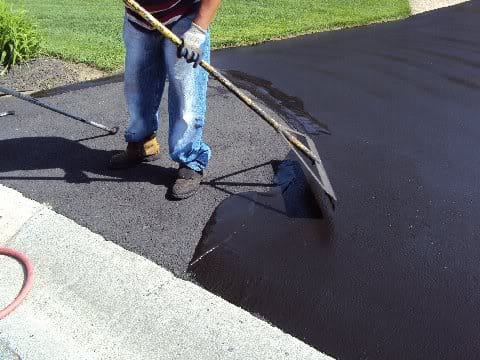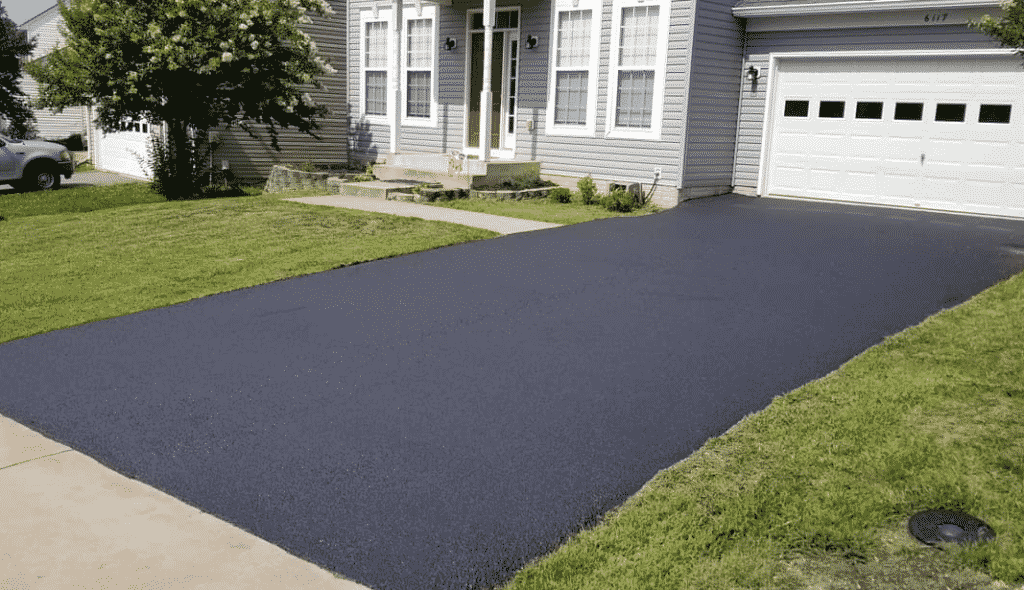Let loose the Possible: Regrading and Asphalt Sealing for Industrial Rooms
Hot Mix Asphalt: A Sustainable Remedy for Pavement
Warm Mix Asphalt (HMA) has actually arised as a leading sustainable choice for sidewalk options, supplying a myriad of ingenious innovations and environmental benefits. Its capacity to decrease and recycle materials energy usage offers a compelling situation for its fostering in road construction jobs. Additionally, the lasting performance and durability of HMA make it a favored option for infrastructure development. As the demand for environment-friendly building and construction techniques expands, discovering the nuances of HMA's sustainability can provide beneficial insights into the future of sidewalk solutions.
Ecological Advantages of Hot Mix Asphalt

Additionally, Hot Mix Asphalt assists to reduce metropolitan heat island impacts. Its dark color soaks up sunshine, lowering the quantity of heat reflected back right into the atmosphere contrasted to lighter-colored sidewalks. This can reduce ambient temperatures in metropolitan areas, lowering the demand for air conditioning and eventually minimizing power consumption.
In enhancement, Warm Mix Asphalt adds to enhanced stormwater administration. Its porous nature enables water to recharge and infiltrate the pavement groundwater materials, reducing drainage and the risk of flooding. These environmental benefits make Hot Mix Asphalt a lasting choice for leading freeways and roadways.
Energy Effectiveness in HMA Manufacturing
Is energy effectiveness a crucial consider the manufacturing of Warm Mix Asphalt (HMA)? Absolutely. Energy plays a substantial duty in the production of HMA, affecting both expense and ecological sustainability. One key facet of power efficiency in HMA production is making use of warm mix asphalt (WMA) modern technologies (hot mix asphalt). WMA enables for the blending and placement of asphalt at lower temperatures contrasted to traditional hot mix asphalt, causing minimized energy consumption during manufacturing. This procedure not only decreases fuel use but also reduces greenhouse gas discharges, making it a more eco-friendly alternative.
Additionally, developments in plant technologies have brought about even more energy-efficient HMA manufacturing processes. Modern plants are made with features like recycled asphalt sidewalk (RAP) processing capacities, reliable heater systems, and boosted insulation, all adding to energy cost savings. By enhancing power usage in HMA manufacturing, the market can reduce its carbon impact while preserving premium sidewalk products. Power efficiency is, therefore, a critical factor to consider in making certain the sustainability of Hot Mix Asphalt manufacturing.
Recyclability of Hot Mix Asphalt
The recyclability of Warm Mix Asphalt (HMA) is a critical facet of its sustainability and lasting environmental effect. HMA is just one of one of the most recycled products in the USA, with over 100 million bunches of reclaimed asphalt sidewalk (RAP) being reused annually in brand-new sidewalk building and construction. Reusing HMA provides several environmental advantages, such as reducing the need for virgin products, decreasing energy intake during manufacturing, and lowering the quantity of waste sent to landfills.
The process of recycling HMA involves crushing the existing sidewalk, squashing it right into smaller pieces, and blending it with new aggregate and asphalt binder to create a recycled mix. On the whole, the recyclability of HMA plays a substantial function in advertising sustainable methods within the sidewalk sector.

Long-Term Efficiency of HMA
Asphalt pavements demonstrate sturdiness and resilience over a prolonged period, showing the long-lasting performance of Hot Mix Asphalt (HMA) Additionally, advancements in HMA innovation, such as the use of polymer-modified binders and warm mix asphalt, have further boosted the durability and durability of HMA sidewalks. By prioritizing quality building and construction and upkeep practices, HMA continues to verify itself as a cost-efficient and sustainable service for lasting pavement anchor facilities.

HMA: Toughness and Sustainability
Demonstrating both toughness and sustainability, Warm Mix Asphalt (HMA) has actually become a cornerstone in the construction of resilient pavement infrastructures - regrading. HMA's resilience comes from its capability to withstand heavy lots, extreme climate condition, and high website traffic quantities, making it a trustworthy selection for highways, freeways, and airport terminal paths. The composition of HMA, which usually includes aggregates, binder, and filler, plays a critical function in enhancing its long life and resistance to tear and use
Additionally, HMA's sustainability hinges on its recyclability and energy-efficient production procedure. The ability to reuse redeemed asphalt sidewalk (RAP) in brand-new HMA blends decreases the demand for virgin products and reduces the environmental impact of pavement building and construction and maintenance. In addition, the energy efficiency of producing HMA hinges on its lower blending temperature levels contrasted to various other sidewalk products, causing decreased energy consumption and greenhouse gas emissions.
Conclusion
In verdict, hot mix asphalt (HMA) offers a sustainable service for pavement with its eco-friendly attributes. HMA's recyclability, power efficiency in production, and lasting durability make it an environment-friendly choice for roadway building and construction. By preserving natural deposits, reducing waste, and lowering greenhouse gas emissions, HMA plays a crucial duty in promoting sustainability in infrastructure growth. Its capability to reduce metropolitan warmth island impacts additionally underscores its relevance have a peek at this site in producing ecologically conscious and resilient sidewalk systems.
HMA is one of the most recycled materials in the United States, with over 100 million loads of reclaimed asphalt pavement (RAP) being recycled every year in brand-new sidewalk building.The process of reusing HMA involves milling the existing pavement, squashing it into smaller pieces, and blending it with new aggregate and asphalt binder to develop a recycled mix.Asphalt pavements demonstrate sturdiness and resilience over a prolonged period, mirroring the long-term performance of Warm Mix Asphalt (HMA) Furthermore, developments in HMA modern technology, such as the use of polymer-modified binders and warm mix asphalt, have actually further improved the longevity and long life of HMA sidewalks. The ability to reuse redeemed asphalt pavement (RAP) in new HMA blends minimizes the need for virgin materials and link reduces the environmental effect of sidewalk building and construction and upkeep.